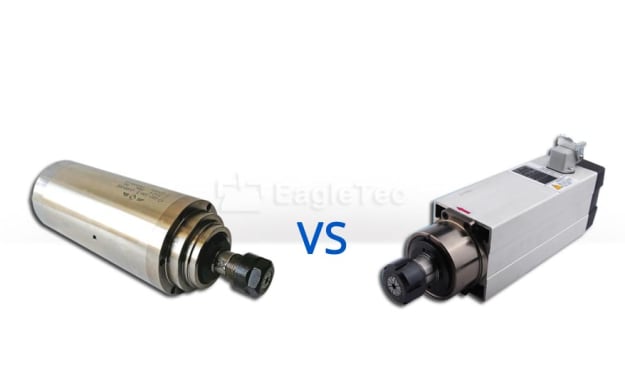
The spindle motor has become famous at an exceptionally critical point in the field of accuracy errands. The shaft is another innovation offering lightweight and low vibration. It is the most basic piece of the CNC machine instrument and to a great extent decides the effectiveness and precision of the hardware. Because of the enhancement of results of the shaft, it is vital to pick the right one. Minute varieties because of human blunders are close to inconceivable. For this degree of assembling, PC mathematical control, or CNC, is a mechanization cycle that utilizes a coded program to perform high-accuracy errands in cycles like boring, crushing, and planes and lights.
The electric spindle has two essential highlights: consistent force and steady power. The force is more affordable and comes in two variations air-cooled axle engine and water-cooled shaft engine. It works along three pros: the even x and vertical y — and the third z-hub, which presents the third aspect. The way to CNC innovation is the axle, which moves along the z-hub to punch, drill or cut material according to development along the x and y tomahawks, and bring it into place. The shaft requires unmatched accuracy given by a specific kind of electromagnetic engine. There are different engines for shifting position, and this article will investigate how to pick a CNC spindle motor.
STEPPER MOTORS
More established renditions of CNC spindle motor use stepper motors, either worked around long-lasting magnets attracted to their lodgings or attractive lodgings to draw in the rotor. In this last option model, the shaft can accomplish higher paces than it would with an extremely durable magnet in the rotor. Stepper engines are less well known and less strong of the two engines generally normal to axles. Stepper engines are adequate for essential CNC applications, which infers that assignments requiring more power or accuracy require another methodology.
SERVO MOTORS
Servo engines are a more complex form of the stepper engine. However they are electromagnetic, their engines have lower post counts than steppers. The basic contrast among stepper and servo engines is the correspondence circle. Stepper engines work on an open correspondence circle they can get flags just from voltage. Servo engines, going against the norm, utilize shut circle correspondence, and that implies they convey and get messages from a regulator. Servo engines work in a joint effort with gearboxes so that high paces are kept up with at high forces, and when changes happen, servo engines can compensate for these movements. With mind boggling pace and speed increase, servo engines are the axle engine of decision for most CNC applications. In any case, the hindrance is that there are a more noteworthy number of moving parts in a servo than in a stepper engine, and that makes it more inclined to disappointment.
SPINDLE SPEED
Past the distinction made sense of above, axle engines come at different greatest rates. Very much like in a motor, shaft speed is estimated in cycles each moment (RPM). The material being cut or bored and the accuracy expected in the gig decides the shaft engine’s fundamental speed. The more modest the surface, the higher the axle speed ought to be.
SPINDLE SPEED
Shaft speed is significant however is immaterial without force. Force is characterized as the rotational power that frames the fundamental standard behind the activity of shaft engines. Not entirely set in stone forcibly, span and point, and as the axle speed builds, the force normally declines. Bigger engines might create higher force. Low force is adequate for cutting wood, however higher force is expected for cutting steel.
SPINDLE MAINTENANCE
The shaft engines can flop because of CNC apparatus’ high paces and force. Normal upkeep of a shaft engine is important to keep it practical and stay away from disappointment because of overheating. Moreover, over-burdening ought to be totally stayed away from.
MATERIAL TO BE CUT
Various materials have various qualities and require an alternate way to deal with cutting them. The materials expected to be cut will decide the sort of axle one ought to utilize.
SPINDLE BUILT
Any shaft which doesn’t have a metal part ought to be stayed away from. This is on the grounds that they can’t deal with the pressure and could fizzle.
SPINDLE SIZE
The right axle size will decide the size of the instrument to be utilized. The shaft breadth and knife measurement can change and ought to be the right size.





Comments
There are no comments for this story
Be the first to respond and start the conversation.